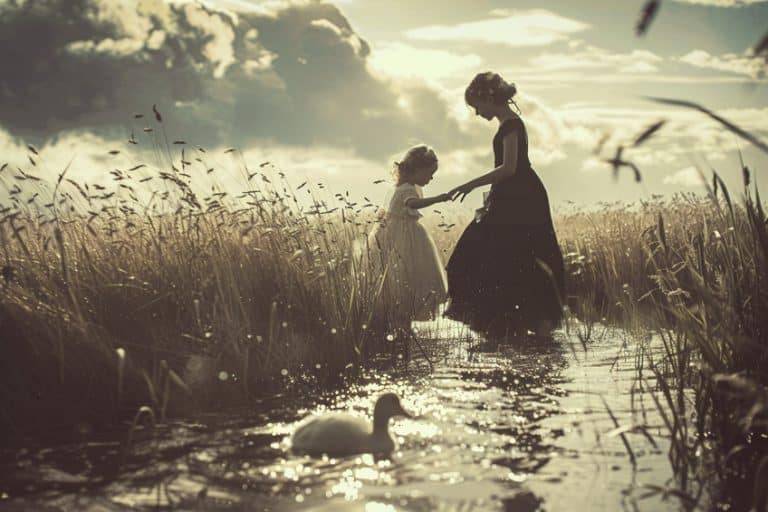Surrealism Photography – Explore Surrealism in Photography
Surrealism photography follows the same principles as other Surrealism art mediums, which André Breton outlined in the 1920s. Early Surrealist photographers achieved incredibly illusionistic and distorted images, by utilizing various innovative analog techniques that enabled them to manipulate the image. In contrast, we have the convenience of software to achieve the same effect in Modern Surrealism photography today. This article will explore everything about Surrealism in photography, including the Surrealism photography definition, Surreal photography examples, and Dada photography.
Exploring Surrealism Photography
Surrealism is an ideological and artistic movement that emerged after the First World War in response to the tragedies and insanity of the devastating war between nations. It was heavily influenced by the Dada movement, which created works of anti-art that purposefully contradicted logic. Surrealism art became a means for people to escape the world’s harsh realities. Technical advancements and breakthroughs became an axis for the growth of artistic output, providing artists with new means of self-expression.

Artists aspired to be groundbreaking and innovative. Surreal Photography is an art form that has a unique place in the Surrealist movement. It pervades all of its actions and accomplishments, and it complements all of the movement’s publications. Nonetheless, Surrealism in photography has been excluded from the discourse on the movement; there is no theoretical writing on photography as there is on poetry, painting, or drawing.
The result is that Surrealism in photography has led to the production of very diverse works.
The Fundamental Characteristics of Surrealism Photography
Surrealism photography is a kind of fine art photography that delves into the realms of the human subconscious mind, the absurd, and the illogical. Surrealist photographers strive to challenge our perceptions of reality by incorporating various fundamental characteristics of Surrealism. These include the incorporation of unexpected visual combinations, symbols, dream-like imagery, juxtaposition, and disorientating perspectives. Let’s take a closer look at the various characteristics of Surrealism in photography in more detail.
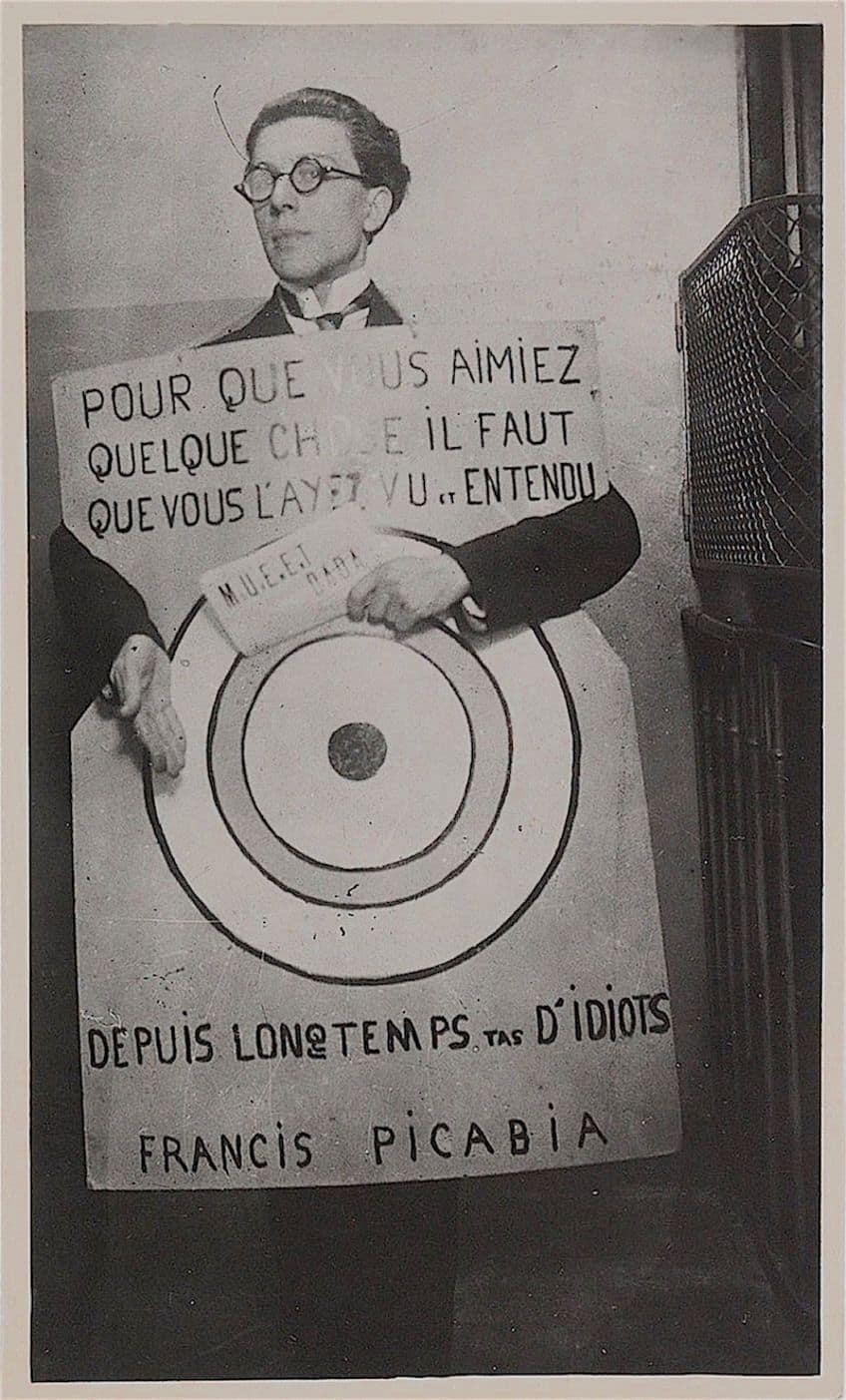
Unexpected Combinations
Surrealist photographers try to create a feeling of confusion, surprise, and intrigue in their images by combining unexpected elements. They like to mix apparently unconnected things or ideas to give them new meaning or to call the audience’s preconceptions about reality into question. Surrealist photographers tend to use the technique of placing various objects in unusual settings. For instance, they may place something familiar in an unusual environment to cause tension or anxiety in the viewer.
This could be anything from a teapot by the beach to a hat resting on the limb of a tree.
Dream-Like Imagery
Surreal photography makes extensive use of dream-like visuals. Surrealist photographers like to use dream-like images to convey the illogical, as well as to probe further into the inner workings of the human psyche. Surreal photography tries to convey a similar sensation of otherworldliness as experienced in dreams since they are usually defined by bizarre and surreal aspects. Surrealist photographers use techniques such as blurring to produce dream-like photos. They are able to produce an impression of movement, uncertainty, or mystique by specifically blurring specific parts of a photograph. Blurriness can also signify an unfocused state of mind.

Surreal Symbolism and Metaphor
Photographers in Surreal photography love to use symbols to communicate concepts or subjects that aren’t explicitly acknowledged in the photograph. A clock, for instance, can symbolize the passing of time or death, whereas a butterfly could represent metamorphosis or rebirth. Photographers working in Surreal photography also use metaphorical images to communicate complex notions or feelings. The image of a person sinking in an ocean of books, for instance, may be employed as a metaphor for being engulfed or overwhelmed by information.
Surreal photographers invite audiences to connect with their art on a deeper level through the use of imagery that may be perceived in numerous ways, allowing their individual experiences and viewpoints to influence their interpretation of the imagery.
Disorientating Perspectives
Surrealist photographers are able to make photos that are both visually pleasing and thought-provoking through the use of unconventional or unexpected perspectives. They can manipulate the proportion and scale of the visual elements in the photograph to produce unsettling perspectives. They can magnify an insignificant element or make a big object look small and totally irrelevant. This produces a sensation of disorientation, indicating a world that does not follow the traditional principles of perspective. Surrealist photographers can create unsettling perspectives by using peculiar angles and viewpoints. They can capture a specific scene from an unusually elevated or lowered angle, or from a viewpoint not normally used in standard photography.
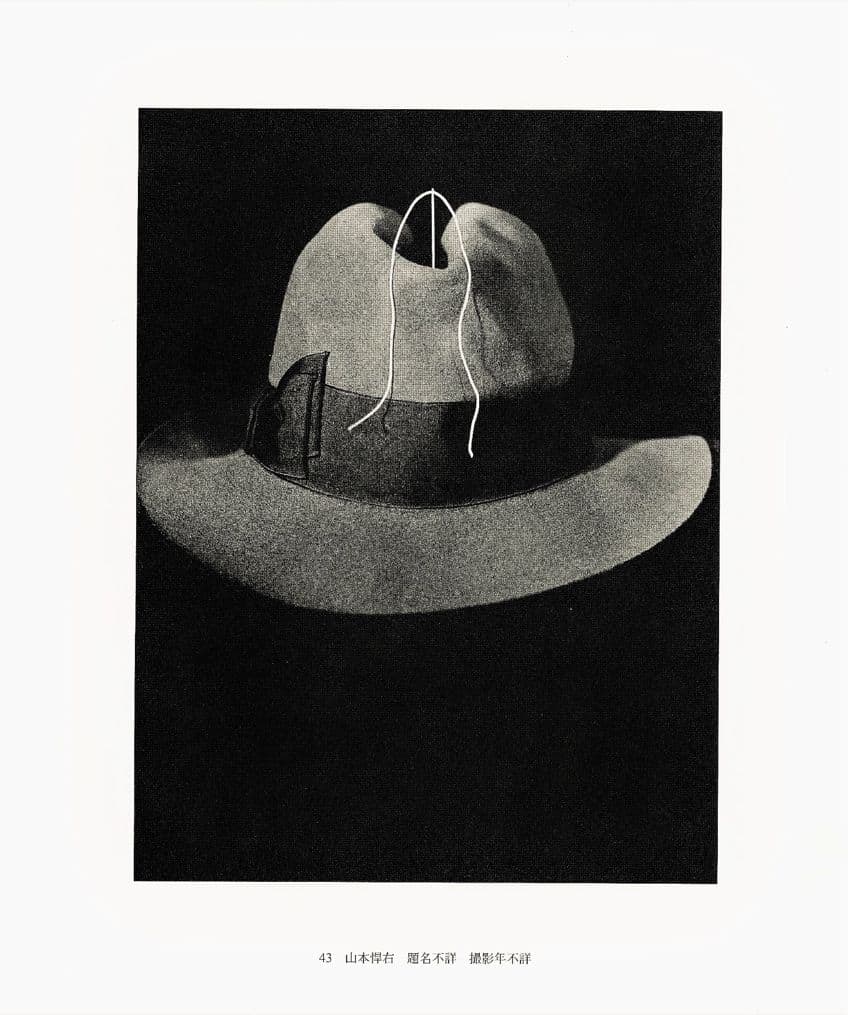
Juxtaposition
Juxtaposition is a popular Surrealist technique in which two or more contrasting or surprising elements are placed next to one another in an image. Surrealist photographers use the juxtaposition of objects to produce photos to express complicated or abstract concepts visually. They often use juxtaposition by presenting familiar things in unusual locations. They could take a photo of a boat in the desert, for instance. This causes uncertainty and surprises the viewers, and could also imply that something more profound and mysterious is going on in the photograph. Surrealist photographers often utilize the juxtaposition of objects and locations to produce photographs that can be interpreted in a number of ways by those who view them.
If you hope to complete craft projects where you need paint that will work well for any number of surfaces, then craft paint is your go-to! The consistency is smooth, creamy, and easy to use.
Techniques Used in Surreal Photography
Taking Surrealism photographs can potentially be challenging at times. This is due to the fact that you must think creatively and beyond the confines of your normal reality. There are, though, several techniques that you can use to make exciting and interesting Surrealism photography. These techniques include the utilization of double exposure, forced perspective, montage, image manipulation, and in-camera techniques.
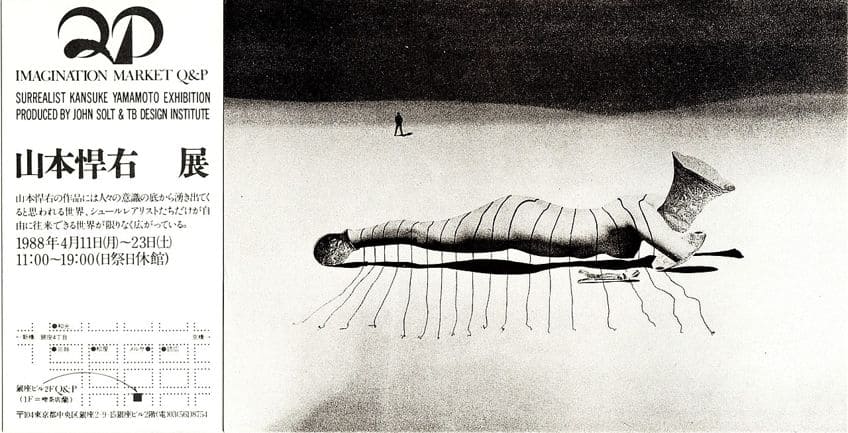
Double Exposure
The process of double exposure involves developing the same film twice, which produces multiple images overlapped on one frame. This approach is used in Surrealism photography for producing ethereal and bizarre photographs. Surrealist photographers typically utilize double exposure to combine multiple images into an original image that is greater than the sum of its individual components. They are able to produce intricate and interesting compositions that are aesthetically extraordinary and stimulating in this way.
They are able to produce compositions that are multi-faceted and ambiguous, and therefore open to multiple interpretations.
Photo Montage
This is a popular technique that allows you to mix two or more photographs to produce an image that is unique. You could, for example, choose an image with a powerful foreground and a different one with an intriguing background to accomplish this. Then, using image editing software, you can combine the two images and make them one. Obviously, they did not have access to software programs when Surrealism first emerged, but the same result was easily achieved by manually cutting and pasting the images together and then taking a photograph of the montage.

In-Camera Techniques
Before the emergence of photographic manipulation software, Surrealist photographers often used a variety of different in-camera techniques to achieve Surrealistic effects in their images. One of the techniques used was long exposure times. This entails leaving the shutter open for a long duration of time, which typically results in blurry photos or images that convey a sense of motion. One can employ this technique to produce Surreal photography that alludes to the fleeting nature of time. These are also camera lenses available that distort the picture in some way, like producing a tilt-shift or fisheye effect.
Color lens filters may be used by surrealist photographers to create photographs with a specific color tint or to impart an overall mood or ambiance.
Forced Perspective
Forced perspectives can also be used to produce engaging Surreal photographs. A camera viewpoint may also be used to produce a strange image. The Surrealist photographer can manipulate the relative sizes and positioning of the objects within the shot in order to achieve depth or distance in forced perspective. This can be achieved by varying the distance between objects and the camera, or by utilizing lenses that compress or extend the observable field of vision. For example, you can photograph someone from beneath and this will give the individual the appearance of being gigantic. One could also try moving the subject further away from the camera to make them look smaller.

Image Manipulation
Images can also be altered by manipulating the film itself. Polaroid manipulation is the process of modifying the chemicals in a Polaroid film to get the effect you want. This technique is generally utilized to produce images that are warped. Solarization is the process of exposing a partly developed film negative to a light source, producing an image with an inverted tonal range.
Surrealist photographers often use this approach to produce abstract or disorienting Surreal photographs.
Famous Surreal Photographers
Above, we covered the fundamentals and techniques involved in Surreal photography. Now, we shall look at a few influential Surrealist photographers who are renowned in their field. Each of them is recognized for their unique contributions to Surrealism in photography.

Man Ray (1890 – 1976)
| Photographer Name | Man Ray (born Emmanuel Radnitzky) |
| Nationality | American |
| Date of Birth | 27 August 1890 |
| Date of Death | 18 November 1976 |
| Place of Birth | Philadelphia, Pennsylvania, United States |
The American photographer Man Ray was a significant figure in the Surrealist movement in both New York and Paris, and his photography is distinguished by its innovative approaches, incorporation of coincidence and incident, and study of the human psyche. The “rayograph”, which consisted of placing items directly onto photographic paper and subjecting them to a light source, was one of Man Ray’s best-known techniques.
This resulted in abstract imagery which usually had a very surreal component to them.
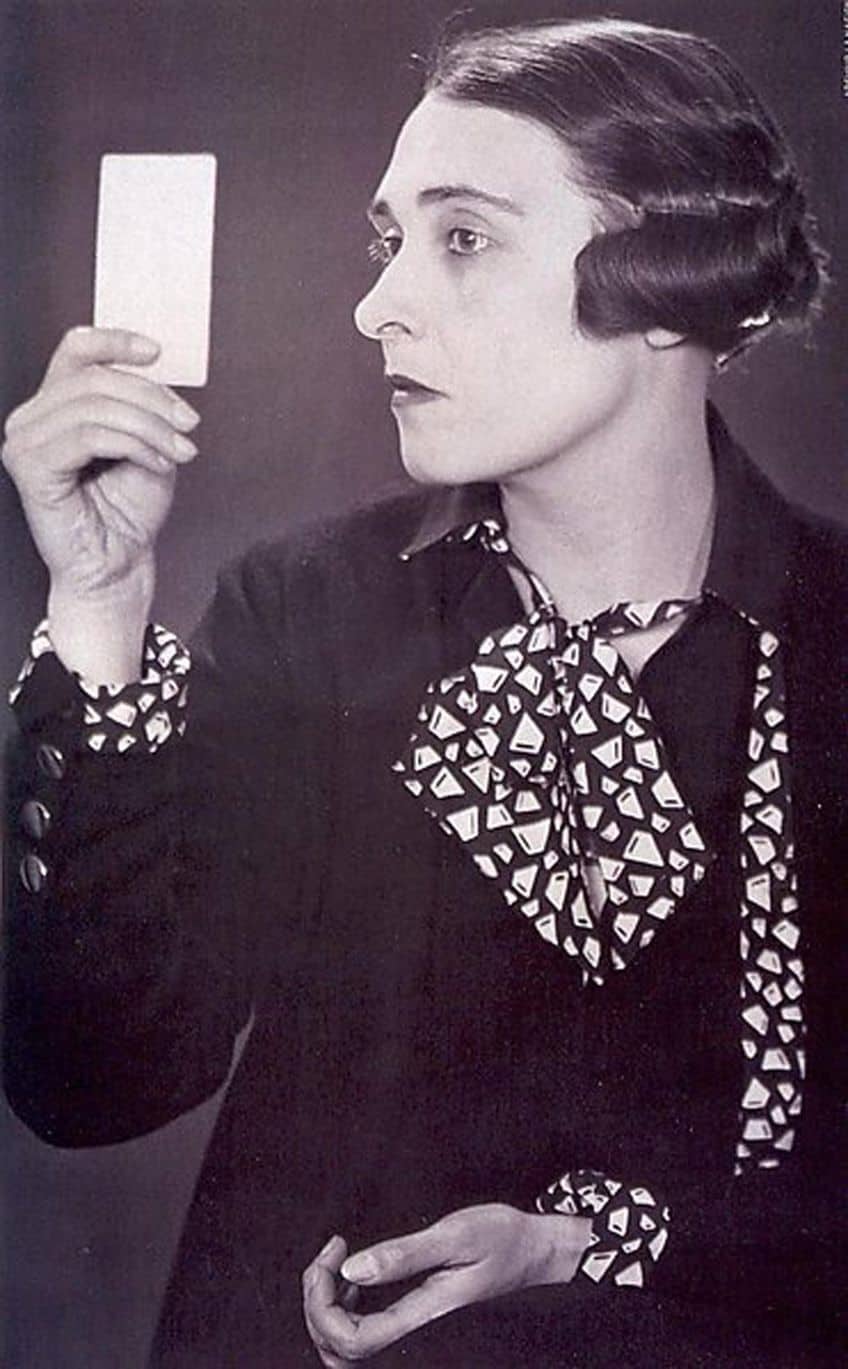
André Breton (1896 – 1966)
| Photographer Name | André Robert Breton |
| Nationality | French |
| Date of Birth | 18 February 1896 |
| Date of Death | 28 September 1966 |
| Place of Birth | Tinchebray, Tinchebray-Bocage, France |
While Breton was not personally a photographer, his theories and essays had a noteworthy effect on Surrealist photography and how it evolved. He urged artists to be open to the illogical and to produce pieces that questioned accepted notions of meaning and beauty. Breton’s theories influenced many Surrealist photographers, who attempted to integrate them into their own photographs. Breton’s effect on Surrealist photography in general can be observed in the way numerous Surrealist photographers used their imagery to explore the unconscious mind.

Duane Michals (1932 – Present)
| Photographer Name | Duane Michals |
| Nationality | American |
| Date of Birth | 18 February 1932 |
| Date of Death | Present |
| Place of Birth | McKeesport, Pennsylvania, United States |
Duane Michals’ Surrealist photographs can be identified by his use of sequential pictures, multiple exposures, and various other techniques to produce captivating and incredibly intimate pictures. Michals’ utilization of text to accompany his photos is one of his work’s distinguishing elements. He often pens prose pieces or short poems that have a strong connection to the photographs, adding a narrative to the work.
This method of integrating words and pictures has become a trademark of his work, and it has inspired many other photographers.
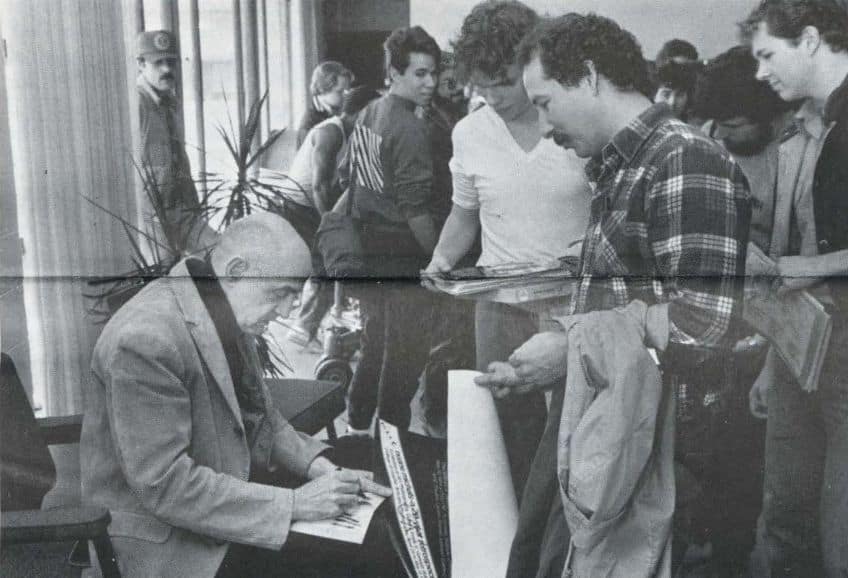
Jerry Uelsmann (1934 – 2022)
| Photographer Name | Jerry Uelsmann |
| Nationality | American |
| Date of Birth | 11 June 1934 |
| Date of Death | 4 April 2022 |
| Place of Birth | Detroit, Michigan, United States |
Jerry Uelsmann is regarded as a pioneer of the Surrealist genre, and his work is defined by the application of multiple exposures, photomontage, and other techniques that result in his distinctive surreal imagery. Uelsmann often mixes various components, such as landscapes, people, and still-life objects, in a manner that defies physics. He considers his artwork as a means of delving into the deepest recesses of the human mind, and he uses them to remark on political and social issues, in addition to communicating his own personal experiences and beliefs.
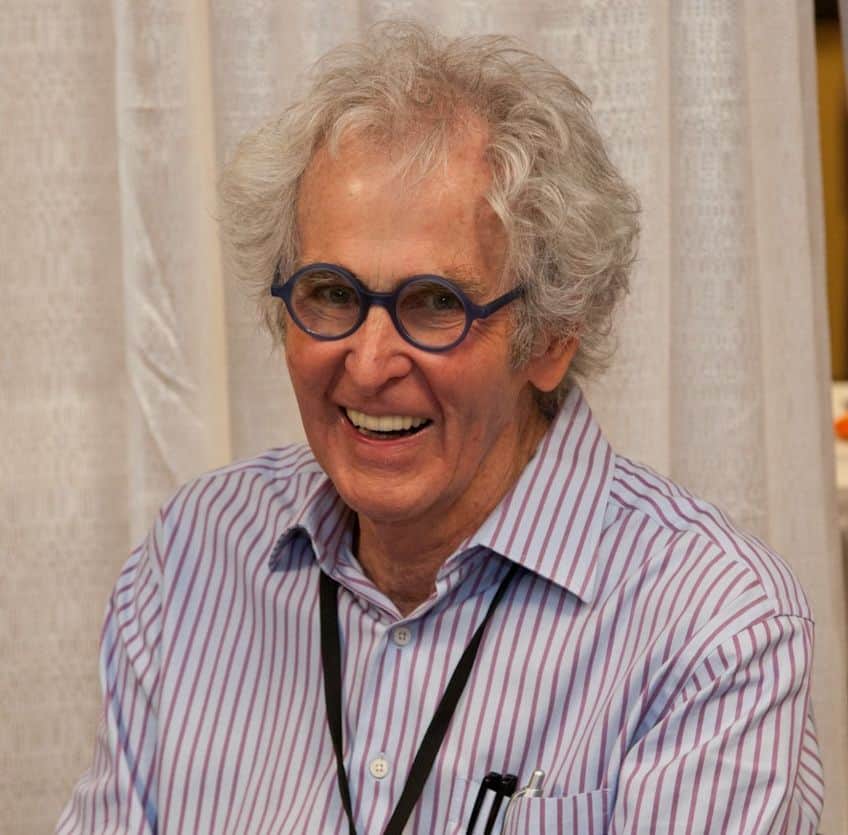
Cindy Sherman (1954 – Present)
| Photographer Name | Cindy Sherman |
| Nationality | American |
| Date of Birth | 19 January 1954 |
| Date of Death | Present |
| Place of Birth | Glen Ridge, New Jersey, United States |
While Sherman’s output is typically associated with the feminist movement, she has also been heavily influenced by Surrealist photography, especially when it comes to her incorporation of role-playing and image manipulation. Her early work, from the late 1970s and early 1980s, consists of a series of black-and-white images in which she appears in various outfits and stances, portraying diverse personas such as Hollywood stars, fashion models, and historical people.
She transforms her look using a variety of techniques such as wigs, makeup, and prosthetics, and she also adds set design and props to provide her photos with a specific narrative and context.
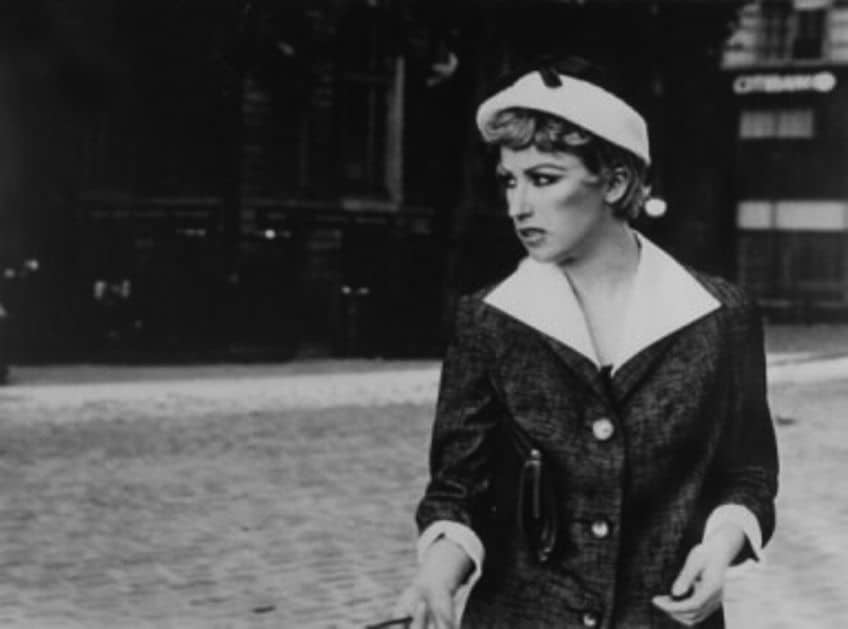
Notable Examples of Surrealism Photography
It’s one thing to imagine a style simply through the written word, and another to view it in person. Perhaps the best way to gain a deeper understanding of Surrealism in photography is to look at a few notable examples of this style. This will help clarify and illustrate the techniques and key aspects of Surrealism in photography we have already discussed above.
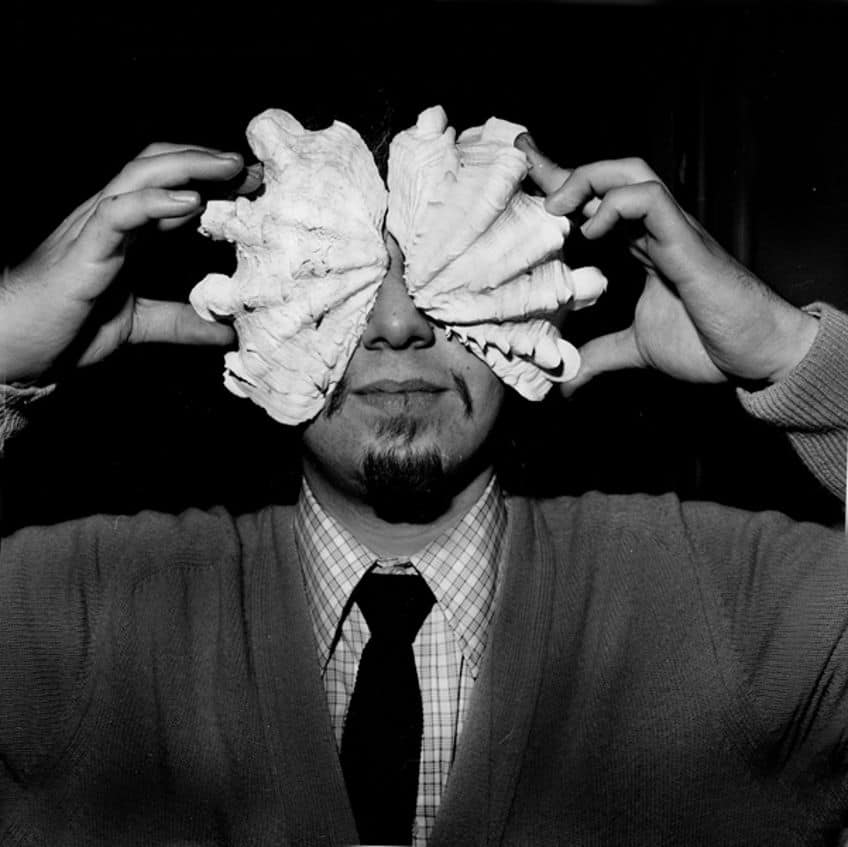
Le Violon d’Ingres (1924) by Man Ray
| Photographer | Man Ray (1890 – 1976) |
| Date | 1924 |
| Medium | Gelatin silver print |
| Dimensions (cm) | 29 x 22 |
| Location | J. Paul Getty Museum, Los Angeles, United States |
This black-and-white portrait of half-naked model Kiki de Montparnasse was shot from behind with two f-holes drawn on her back to convey the illusion of her body being shaped like a violin. This image was first published in Littérature, the Surrealist magazine, in 1924, and its title is derived from a well-known French phrase, le violon d’Ingres, which essentially means a hobby that originates from the famed French neoclassical painter, Jean-Auguste-Dominique Ingres, who used to play the violin when he wasn’t painting.
Man Ray was a major fan of Ingres’ art and was inspired by Ingres’ masterpiece The Valpinçon Bather (1808).
In Voluptus Mors (1951) by Salvador Dalí
| Photographer | Salvador Dalí (1904 – 1989) |
| Date | 1951 |
| Medium | Black-and-white silver print |
| Dimensions (cm) | 27 x 21 |
| Location | Available on artnet.com |
Salvador Dali collaborated with Philippe Halsman, the Magnum photographer in 1951 to produce one of history’s most bizarre and intriguing photos. The black-and-white photograph features a number of nude ladies carefully positioned to resemble a frightening skull. In the photograph, Dali stands next to the skull, looking at the observer like a nefarious ringmaster. This Surrealist photograph blends Halsman’s flair for producing striking psychological portraiture with a touch of Dali-esque oddity.
Fallen Angel (1968) by Duane Michals
| Photographer | Duane Michals (1932 – Present) |
| Date | 1968 |
| Medium | Gelatin silver print |
| Dimensions (cm) | 8 x 12 |
| Location | RISD Museum, Rhode Island, United States |
There are two people in this black and white series: a regular girl and a male individual with wings who seems to be an angel. This image depicts an angel who succumbs to passion and has sex with a woman. The angel loses his wings after having sex and is plainly upset about what he has done.
He then rushes out of the room, filled with sorrow.
Untitled (House and Roots) (1982) by Jerry Uelsmann
| Photographer | Jerry Uelsmann (1934 – 2022) |
| Date | 1982 |
| Medium | Gelatin silver |
| Dimensions (cm) | 47 x 38 |
| Location | Heritage Auctions, Dallas, United States |
This classic black-and-white shot, taken in 1982, depicts a home that seems to be positioned on a stump of tree roots. It is regarded as a notable example of Uelsmann’s revolutionary Surrealist photography style, which involved the blending of several images to produce one dream-like photo. In this instance, Uelsmann mixed a photograph of a home with one of a tree with exposed roots to create an artwork that questions the observer’s perspective of reality and the human-nature relationship.
Untitled #140 (Fairy Tales Series) (1985) by Cindy Sherman
| Photographer | Cindy Sherman (1954 – Present) |
| Date | 1985 |
| Medium | Color photograph |
| Dimensions (cm) | 185 x 124 |
| Location | Skarstedt Gallery, New York City, United States |
Sherman crafts tableaux based on famous fairy tales such as Cinderella and Little Red Riding Hood in this collection of photographs. Her surreal incorporation of strange props, costumes, and locations in these photos subverts the typical narratives and gender stereotypes of these tales. In this photo, the person in the photo is wearing a grotesque animal mask resembling a pig.
The pig is depicted in the act of eating something.
Tips for Creating Surreal Photography
Perhaps you are reading this article because you are keen to try to produce some of your own Surrealism photography. If so, then these following tips will help you do just that. Many of these tips are used by the most renowned Surrealist photographers across the world.
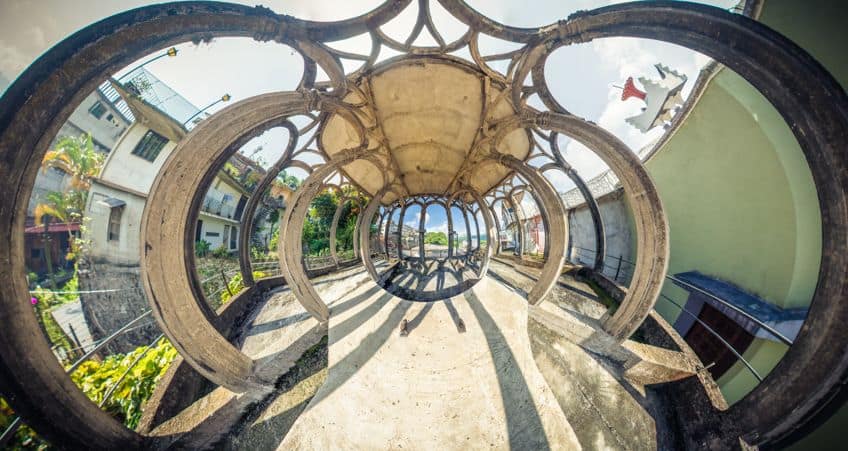
Experimenting With Various Techniques
The use of unique methods and techniques for creating unusual and ethereal photographs is one of the characteristic features of surreal photography. Experiment with various techniques and methods, such as double exposure, image modification, or forced perspective. Combine different techniques to produce unexpected and distinctive effects.
Surreal photography is essentially all about deviating from traditional rules and discovering new possibilities.
Search for inspiration in unconventional areas, such as your dreams or abstract concepts. Allow your imagination to roam free and observe where it takes you. Consider the subjects and concepts that you wish to explore in your photos, and how you may utilize items, situations, or characters to visually portray those ideas.
The Use of Props and Costumes
Many renowned Surrealist photographers, such as Cindy Sherman, utilize a variety of costumes and props to add a surreal touch to their photos. Costumes and props used in photography should be striking and distinctive. Look for props and clothes with intriguing shapes, textures, and colors that may help you portray the atmosphere or idea you’re attempting to convey in your photographs. Think about how you could use them to provide context or a narrative to an image. Consider the costumes and props you’re wearing and how they could be perceived symbolically.
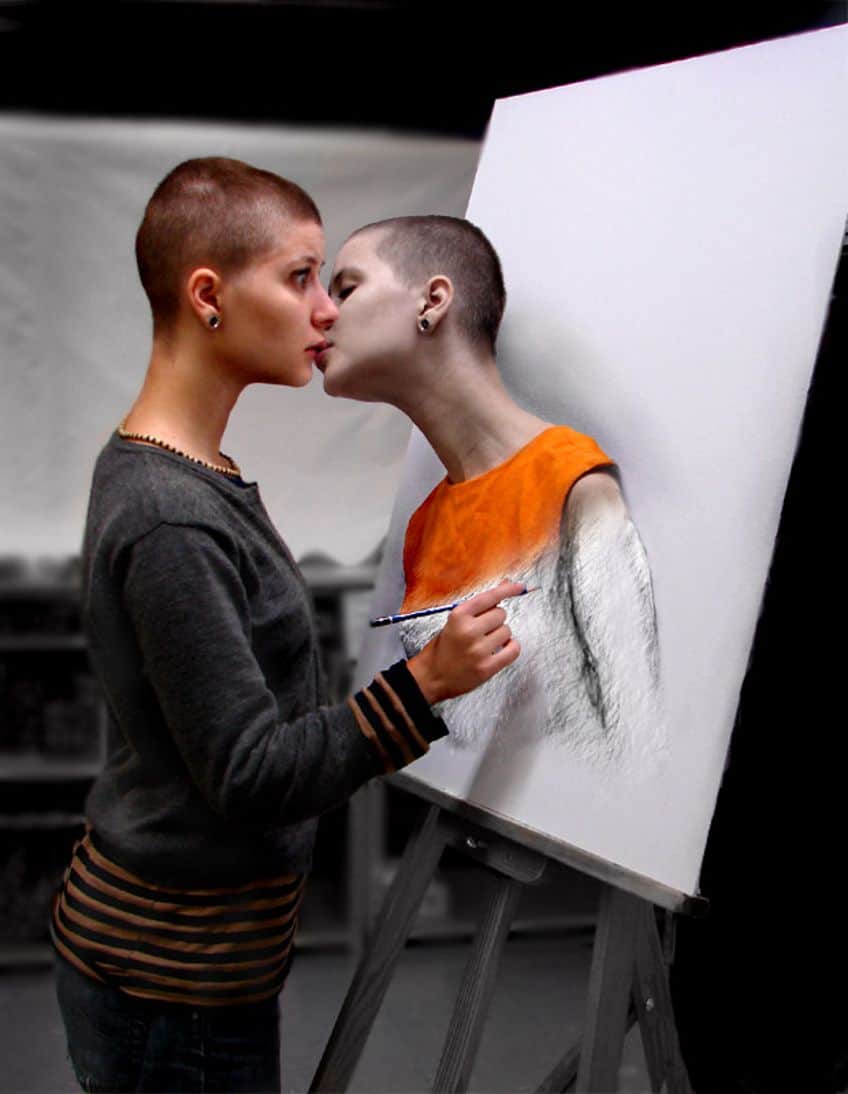
Picking Unusual Locations
The place you pick to take your photographs, as with props and clothes, may be interpreted symbolically. Look for a location that has a certain significance or that implies a specific idea or topic. You don’t have to go to exotic destinations to locate intriguing locations to photograph. Explore secret passageways, abandoned structures, and other disregarded locations in your own neighborhood or community.
Look for settings with intriguing textures and colors that can possibly generate the feeling you’re attempting to express.
The Application of Lighting and Shadows
Experiment with various lighting options, such as artificial light, natural light, and colored gels. If you want to establish an eerie atmosphere, use strong lighting and deep shadows. Try playing around with backlighting by photographing a subject against a powerful light source. Shadows are also able to give your photographs depth. Cast fascinating shadows in the environment using various. Color temperatures vary depending on the light source. Experiment with different light sources, both warm and cool, to produce unusual color combinations. The trick for utilizing lighting and shadows in your Surrealism photography is to experiment with various techniques until you get the aesthetic that you desire.
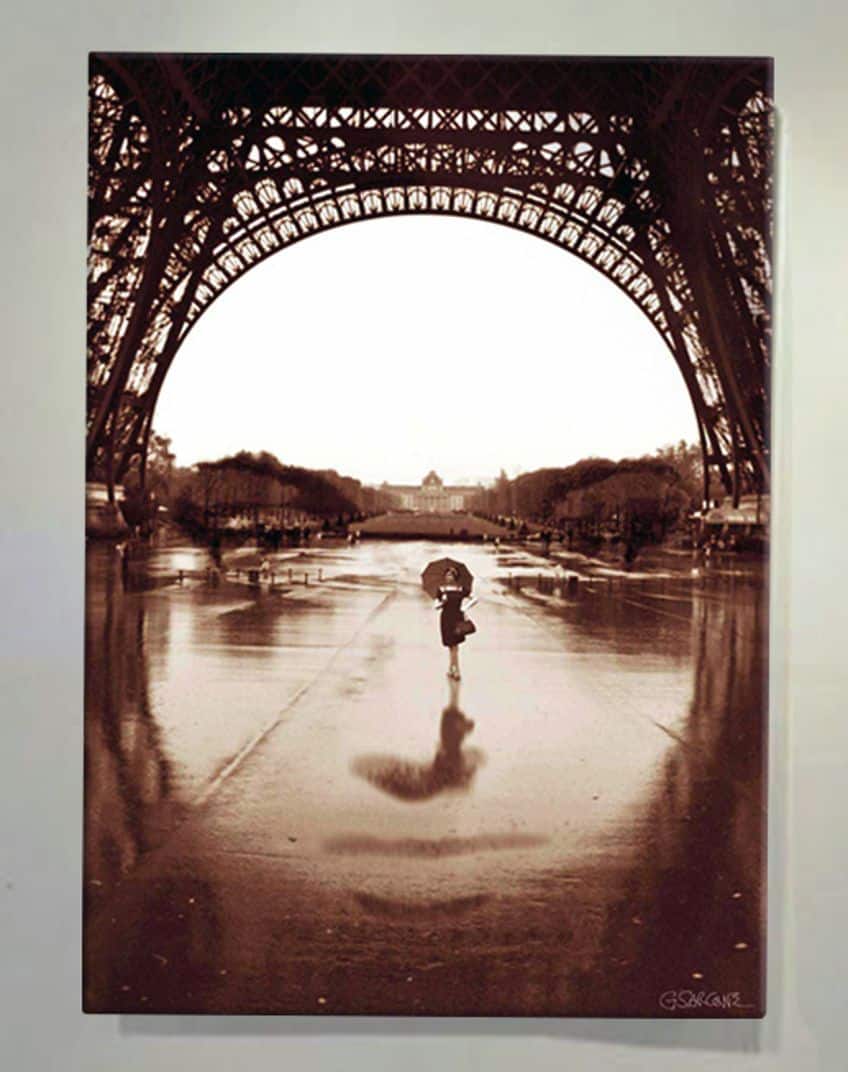
Experimenting With Scale and Perspective
Changing your camera’s angle can drastically change the viewpoint of your photograph. Try filming from low, high, or multiple vantage points. For producing strange and mind-bending visuals, use forced perspective or one of the other optical illusions. Shallow depth of field can also be used to blur the elements in the background while bringing your subject into focus, while a deep depth of field can be used to keep every detail in the scene in focus.
Making miniature landscapes is another great way to play with scale and perspective.
Impact on Modern Art
Surrealist photography has had a profound effect on photography as a medium. Surrealist photographers experimented with methods such as photomontage, double exposure, and other types of visual manipulation, pushing the boundaries of what was deemed “normal” in photography. Surrealist imagery has been employed in advertisements to produce unique and attention-grabbing advertisements.

Surreal imagery is used by advertisers to convey playfulness or emphasize the unexpected. Yet, the use of surreal imagery in commercials has been criticized for appropriating a subversive movement. Many other art forms, such as sculpture, painting, literature, and film, have been inspired by Surrealism in photography. Surrealism’s emphasis on the subconscious, the illogical, and the dream-like has influenced innumerable artists working in various media.
Ethical Considerations of Surrealism in Photography
Surreal photography may be an effective technique for looking into sensitive themes, but photographers must exercise caution to avoid perpetuating damaging stereotypes or reinforcing negative opinions, especially in modern Surrealism photography, where some topics might be triggering to individuals who have experienced some kind of trauma relating to the subject. It is of the utmost importance to address these topics with care and due respect, as well as to consult with people who have dealt with the topic first-hand to ensure that their viewpoints are appropriately portrayed.
While image manipulation is frequently used in surreal photography, it is vital to be open about any changes made.
Photographers need to refrain from misrepresenting their images or modifying them in a misleading manner. Surreal photography can be very subjective, therefore it is critical to offer context to assist viewers in comprehending the photographer’s objective. Photographers should think about including a quick explanation or synopsis of their photographs, as well as utilizing titles that offer some context.
Learning to Appreciate Surrealism Photography
If one is new to Surrealism in photography and wants to learn how to appreciate modern Surrealism photography, then the following guidelines can help you. For example, understanding the particular context in which a Surrealist photo was taken allows you to develop a greater appreciation for the photographer’s techniques and ideas, in addition to the work’s cultural and historical importance. Many surrealist photographs, for instance, were produced in the early 20th century, during a period characterized by significant disruption in society and politics.
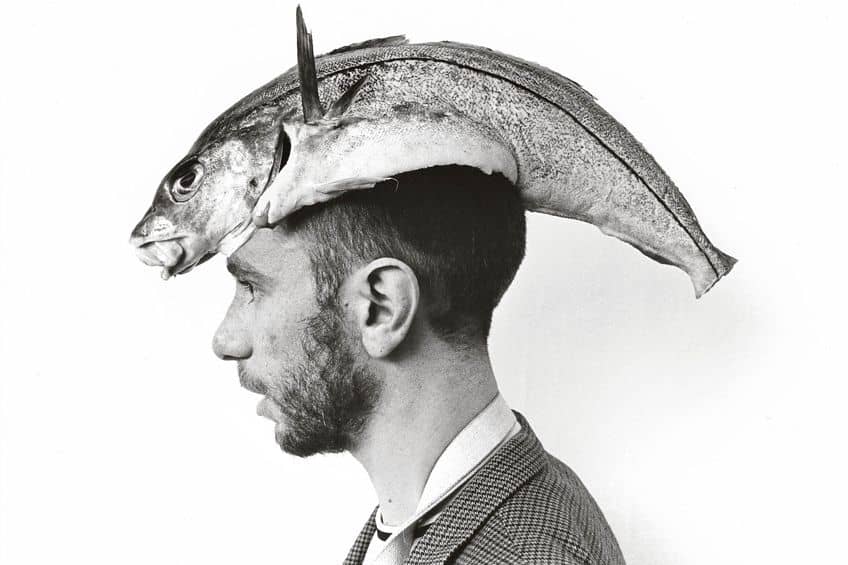
This will help you to comprehend how Surrealist photography was employed as a form of creative expression and social criticism throughout this time period. Surrealism photography often includes cultural allusions from mythology, literary works, and other forms of art. Understanding these references could help you comprehend a photograph’s layers of meaning and significance. Understanding the photographer’s background and experiences might help you comprehend the inspirations behind their pictures as well as the personal relevance of specific themes or topics.
With that, we conclude our in-depth exploration of early and modern Surrealism photography. You should now have a decent understanding of the key characteristics of Surrealism in photography, as well as the various techniques that can be applied. We have introduced you to a few notable photographers and their works, but there are many more to explore, as it is a truly diverse style, with each photographer offering something unique to appreciate. Along with Dada photography, Surreal photography has helped redefine what can be conveyed and portrayed in the medium.
Take a look at our Surrealism in photography webstory here!
Frequently Asked Questions
What Is the Surrealism Photography Definition?
It is a style of photography that embraces the principles of the Surrealist movement. This is achieved using a multitude of techniques, including montage, symbolism, unexpected combinations, and juxtaposition. Surrealist photographers can use their images to convey a specific meaning or create visuals that are open to personal interpretation. A significant aspect of Surrealism photography was the exploration of the human psyche, specifically the subconscious.
What Techniques Do Surrealist Photographers Employ?
There are many techniques that Surrealist photographers employ in order to create their bizarre imagery. These techniques include the use of double exposure and montage. Other techniques incorporate forced perspectives, in-camera techniques, and image manipulation. In the era when the style first emerged, they would manipulate the film to create unusual imagery. In modern Surrealism photography, the same result can be achieved with the use of image manipulation software.
What Are the Key Characteristics of Surreal Photography?
Many photographers juxtapose elements of the real and imagined in their Surreal photography. Surreal photography often features disorientating perspectives, resulting in dream-like imagery that is strange and perplexing. One of the key characteristics of Surrealism in photography is the use of visual metaphors and symbolism. This can help to imbue your works with deeper meaning and significance, as well as allow the audience to perceive something personal within the composition. Another characteristic that can make an image appear surreal is the use of unexpected combinations.
Jordan Anthony is a film photographer, curator, and arts writer based in Cape Town, South Africa. Anthony schooled in Durban and graduated from the University of the Witwatersrand, Johannesburg, with a Bachelor of Art in Fine Arts. During her studies, she explored additional electives in archaeology and psychology, while focusing on themes such as healing, identity, dreams, and intuitive creation in her Contemporary art practice. She has since worked and collaborated with various professionals in the local art industry, including the KZNSA Gallery in Durban (with Strauss & Co.), Turbine Art Fair (via overheard in the gallery), and the Wits Art Museum.
Anthony’s interests include subjects and themes related to philosophy, memory, and esotericism. Her personal photography archive traces her exploration of film through abstract manipulations of color, portraiture, candid photography, and urban landscapes. Her favorite art movements include Surrealism and Fluxus, as well as art produced by ancient civilizations. Anthony’s earliest encounters with art began in childhood with a book on Salvador Dalí and imagery from old recipe books, medical books, and religious literature. She also enjoys the allure of found objects, brown noise, and constellations.
Learn more about Jordan Anthony and the Art in Context Team.
Cite this Article
Jordan, Anthony, “Surrealism Photography – Explore Surrealism in Photography.” Art in Context. May 25, 2023. URL: https://artincontext.org/surrealism-photography/
Anthony, J. (2023, 25 May). Surrealism Photography – Explore Surrealism in Photography. Art in Context. https://artincontext.org/surrealism-photography/
Anthony, Jordan. “Surrealism Photography – Explore Surrealism in Photography.” Art in Context, May 25, 2023. https://artincontext.org/surrealism-photography/.






